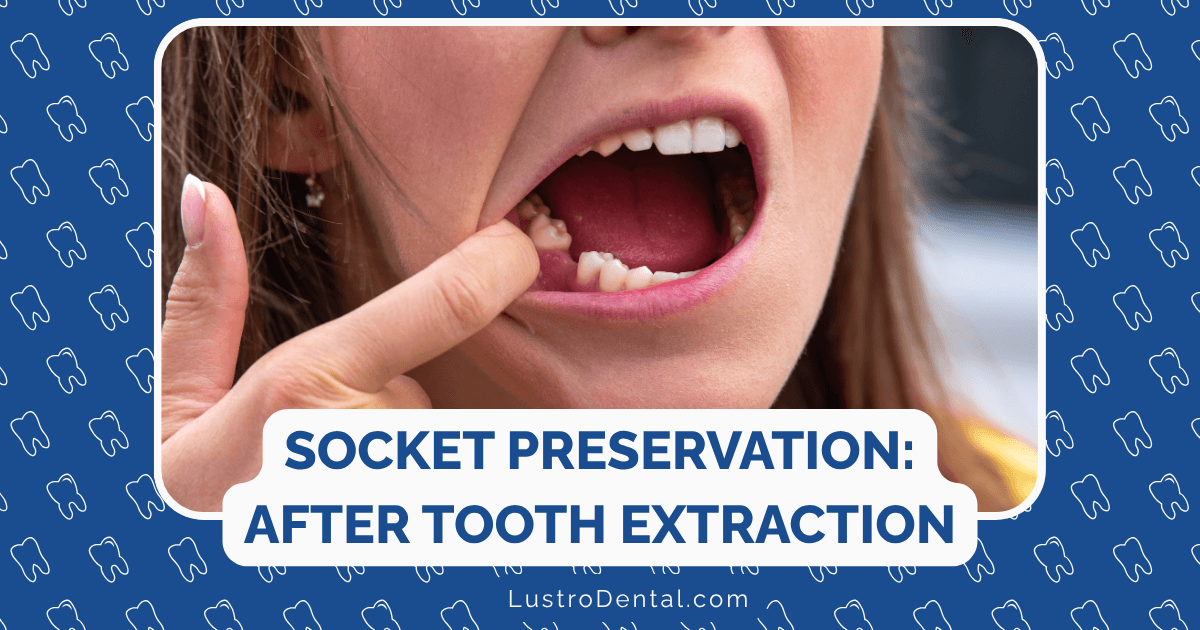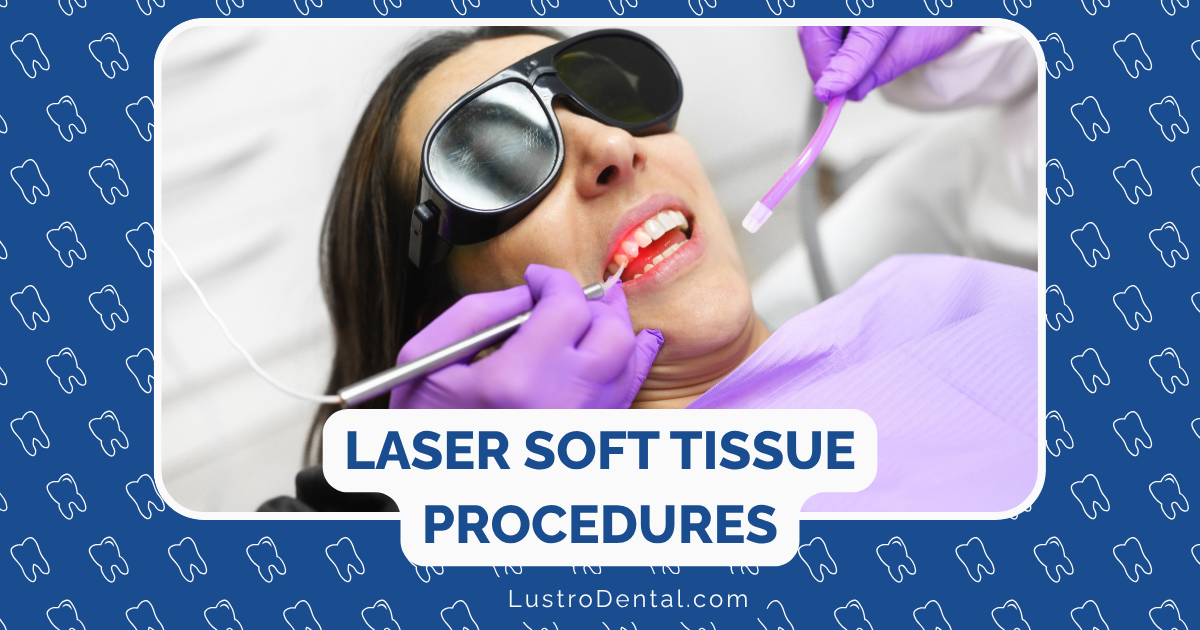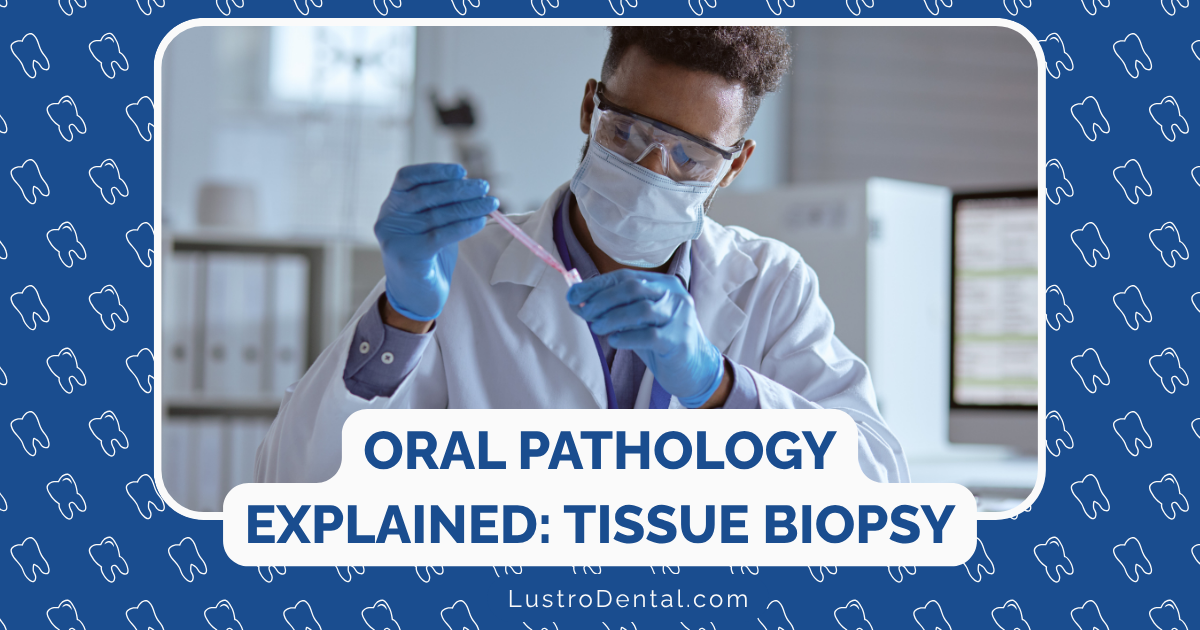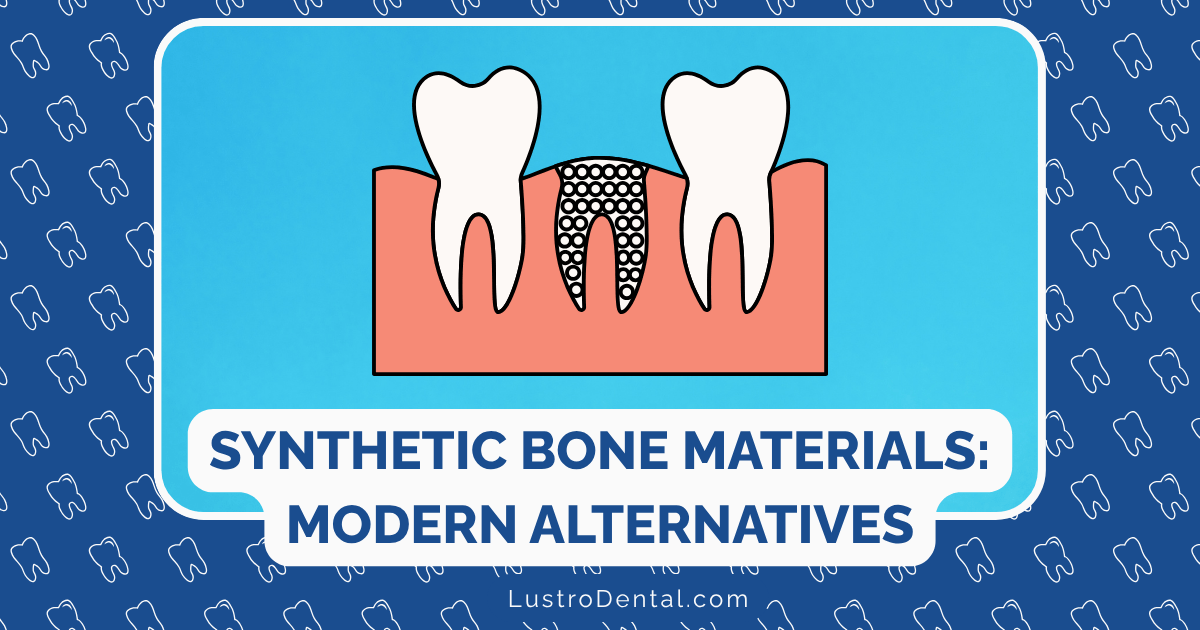Socket Preservation: Maintaining Bone After Extraction for Future Implants

When John came to our office needing a tooth extraction, his main concern wasn’t the procedure itself but what would happen afterward. “I might want an implant in the future,” he told me, “but I’ve heard you can lose bone after an extraction. Is there anything we can do to prevent that?”
John’s question highlights a critical concern in modern dentistry. When a tooth is extracted, the body naturally begins to resorb the surrounding bone—a process that can significantly complicate future implant placement. Fortunately, a procedure called socket preservation can help maintain that precious bone structure, keeping options open for optimal tooth replacement.
In this comprehensive guide, we’ll explore socket preservation—what it is, why it matters, how it’s performed, and what you can expect if you’re considering this procedure.
The Hidden Challenge of Tooth Extraction
When a tooth is removed, it leaves behind an empty socket in the alveolar bone (the specialized bone that surrounds and supports our teeth). What many people don’t realize is that this bone exists primarily to support teeth—and when a tooth is gone, the body considers that bone unnecessary.
The Natural Process of Bone Loss
Research published in the Journal of Dental Research reveals the timeline of bone loss after extraction:
- Within the first 3 months: Up to 30% of the bone width is lost
- By 6 months: Up to 50% of the ridge width can disappear
- After 1 year: The vertical height of bone can decrease by several millimeters
- Long-term: Bone loss continues at a slower rate indefinitely
Dr. Sarah Johnson of the American Academy of Periodontology explains: “The most rapid bone loss occurs in the first three months after extraction. This initial remodeling can dramatically change the shape of the ridge, often creating a concavity that makes implant placement challenging or even impossible without additional grafting procedures.”
Why Bone Preservation Matters
This bone loss creates several potential problems:
- Compromised aesthetics: The gum tissue follows the bone, creating a visible depression or “dent” where the tooth used to be
- Limited implant options: Insufficient bone may make standard implant placement impossible without additional grafting
- More complex future procedures: Reconstructing lost bone later is more invasive, expensive, and unpredictable than preserving it from the start
- Impact on adjacent teeth: Bone loss can affect the support structure of neighboring teeth
As Dr. Michael Chen of Mayo Clinic notes, “Prevention is always more predictable than reconstruction. Socket preservation allows us to maintain the natural dimensions of the jaw, creating an optimal foundation for future restorative options.”
What Is Socket Preservation?
Socket preservation (also called ridge preservation or alveolar ridge preservation) is a procedure performed at the time of tooth extraction to maintain the bone that would otherwise be lost.
The procedure involves:
- Carefully extracting the tooth to minimize trauma to surrounding bone
- Cleaning the socket to remove any infection or inflamed tissue
- Placing bone graft material into the empty socket
- Covering the graft with a protective membrane
- Securing the site with sutures
This approach helps maintain both the width and height of the bone, creating an ideal environment for future implant placement.
Types of Bone Graft Materials Used in Socket Preservation
Several types of graft materials can be used for socket preservation, each with its own advantages and considerations:
Autograft (Your Own Bone)
Source: Harvested from another site in your body, typically the chin, ramus (back part of lower jaw), or hip
Advantages:
- Contains living cells capable of forming new bone
- No risk of disease transmission
- Excellent biocompatibility
Considerations:
- Requires a second surgical site
- Limited availability
- Additional discomfort at donor site
Allograft (Human Donor Bone)
Source: Cadaver bone processed through tissue banks under strict FDA regulations
Advantages:
- No need for a second surgical site
- Readily available in various forms
- Well-documented safety and efficacy
Considerations:
- No living cells
- Some patients have ethical concerns
- Slight theoretical risk of disease transmission (though no documented cases with modern processing)
Xenograft (Animal-Derived)
Source: Typically bovine (cow) or porcine (pig) bone processed to remove all organic components
Advantages:
- Structurally similar to human bone
- Excellent space-maintenance properties
- Slow resorption rate provides long-term scaffold
Considerations:
- Some patients have ethical or religious concerns
- Slower integration compared to other materials
- May remain partially visible on X-rays for years
Alloplast (Synthetic Materials)
Source: Laboratory-created materials, typically calcium phosphates or bioactive glass
Advantages:
- No disease transmission risk
- No ethical concerns
- Consistent quality and composition
Considerations:
- Variable clinical performance depending on the specific material
- Some types may break down unpredictably
According to research published in the International Journal of Oral & Maxillofacial Implants, all these materials can effectively preserve socket dimensions, though they work through slightly different biological mechanisms.
Dr. Robert Wilson, a researcher at the National Institute of Dental and Craniofacial Research, explains: “The ideal graft material depends on the specific clinical situation and patient preferences. In many cases, combinations of materials may provide optimal results by leveraging the advantages of each.”
The Socket Preservation Procedure: What to Expect
If you’re scheduled for a tooth extraction with socket preservation, here’s what you can expect during the procedure:
Before the Procedure
- Consultation and planning: Your dentist will evaluate your specific situation, discuss options, and develop a treatment plan.
- Medical history review: Certain conditions and medications may affect healing or require antibiotic premedication.
- Pre-operative instructions: You’ll receive guidelines about eating, drinking, and medication adjustments before the procedure.
During the Procedure
- Anesthesia: Local anesthesia will be administered to ensure your comfort. Sedation options may be available for anxious patients.
- Gentle extraction: The tooth will be removed using techniques designed to preserve as much bone as possible. This may involve sectioning the tooth to minimize pressure on the socket walls.
- Socket preparation: The socket will be thoroughly cleaned to remove any infected or inflamed tissue. In some cases, a special instrument called a curette is used to stimulate bleeding from the bone walls, which promotes healing.
- Graft placement: The chosen bone graft material is carefully packed into the socket. This material serves as a scaffold for your body’s own bone-forming cells.
- Membrane placement: A protective barrier membrane is often placed over the graft material. This prevents soft tissue from growing into the socket and allows bone-forming cells to populate the area.
- Closure: Depending on the specific technique, the site may be closed with sutures. In some cases, the membrane is exposed and will gradually be covered by your own tissue as healing progresses.
The entire procedure typically takes 30-60 minutes, depending on the complexity of the extraction and the specific preservation technique used.
After the Procedure
- Immediate post-op: You’ll receive gauze to bite on and instructions for managing minor bleeding.
- Pain management: Most patients experience minimal discomfort that can be managed with over-the-counter pain relievers. Prescription medications may be provided if needed.
- Swelling control: Applying ice packs (20 minutes on, 20 minutes off) for the first 24-48 hours helps minimize swelling.
- Activity restrictions: You’ll need to avoid strenuous activity, smoking, and drinking through straws for at least 48-72 hours.
- Diet modifications: Soft foods are recommended for the first few days, gradually returning to a normal diet as comfort allows.
- Oral hygiene: You’ll receive specific instructions for cleaning around the surgical site. Typically, gentle rinsing with salt water or prescribed mouth rinse begins 24 hours after the procedure.
The Healing Timeline: What Happens After Socket Preservation
Understanding the healing process can help set appropriate expectations:
Days 1-7: Initial Healing Phase
- Blood clot forms and stabilizes the graft material
- Soft tissue begins to grow over the socket
- Swelling and discomfort gradually subside
- Initial inflammatory response brings healing cells to the area
Weeks 2-4: Early Bone Formation
- Soft tissue healing completes
- New blood vessels grow into the graft material
- Early bone-forming cells colonize the graft
- The body begins to break down some graft particles
Months 1-3: Active Bone Formation
- Significant new bone formation occurs
- Graft material begins to be replaced by your own bone
- The ridge maintains its volume and shape
- Soft tissue continues to mature and strengthen
Months 4-6: Maturation Phase
- New bone continues to remodel and strengthen
- Most socket preservation sites are ready for implant placement
- The ridge maintains approximately 85-90% of its original dimensions
- Some graft materials may still be visible on X-rays
Dr. Lisa Rodriguez of the American Academy of Implant Dentistry notes: “The timeline can vary based on individual factors like age, health status, and the specific materials used. Some patients may be ready for implant placement as early as 3-4 months, while others may benefit from a longer healing period.”
Socket Preservation vs. Immediate Implant Placement
In some cases, dentists may recommend placing an implant at the same time as extraction rather than performing socket preservation. This approach, called immediate implant placement, has specific indications and considerations:
When Immediate Implant Placement May Be Appropriate:
- Intact socket walls with minimal damage
- Absence of active infection
- Sufficient bone beyond the socket apex for initial implant stability
- Patient’s overall health supports optimal healing
When Socket Preservation Is Preferable:
- Damaged socket walls from infection or trauma
- Insufficient bone for immediate implant stability
- Active infection at the extraction site
- Patient factors that might compromise healing
- Uncertainty about future implant placement
A study in the International Journal of Oral and Maxillofacial Surgery found that both approaches can yield excellent results when properly selected for the appropriate clinical situation.
The Benefits of Socket Preservation: Is It Worth It?
Socket preservation does add some cost and complexity to a tooth extraction, leading many patients to wonder if it’s truly necessary. Consider these benefits when making your decision:
Preserved Treatment Options
Socket preservation keeps your restorative options open. Without it, bone loss may eliminate the possibility of an ideal implant placement, forcing compromises in the final restoration.
Cost-Effectiveness
While socket preservation adds cost to the extraction procedure, it’s typically much less expensive than the bone augmentation procedures that might be needed later if significant resorption occurs.
Simplified Future Treatment
Placing an implant in a preserved socket is generally more straightforward, requiring less surgical time and potentially fewer complications than placing an implant in a resorbed ridge.
Improved Aesthetics
Even if you choose a bridge or removable prosthesis rather than an implant, a preserved ridge creates a more natural appearance without the collapsed look that often occurs after bone loss.
Psychological Benefits
Many patients report peace of mind knowing they’ve taken steps to maintain their options, even if they’re not ready for an implant immediately.
Is Socket Preservation Right for You?
While socket preservation offers significant benefits, it’s not necessary or appropriate in every situation. Consider these factors when discussing options with your dental provider:
Socket Preservation May Be Highly Beneficial If:
- You’re considering an implant in the future
- The extraction site is in an aesthetically important area
- You have thin bone or other anatomical factors that increase risk of significant resorption
- You want to maintain maximum flexibility for future treatment options
Socket Preservation May Be Less Critical If:
- The extraction site is in a non-visible area and you have no plans for an implant
- You plan to receive a conventional removable denture (though preservation can still improve denture fit)
- The socket has extremely thick walls that may naturally resist resorption
- You have medical contraindications to grafting procedures
John’s Story: A Real Patient Experience
Remember John from the beginning of our article? He opted for socket preservation when his molar was extracted. Six months later, when he decided to proceed with an implant, the site had maintained excellent bone volume and density.
“The extra step at the time of extraction made a huge difference,” John shared. “My dentist showed me X-rays of what typically happens without preservation, and I’m glad I didn’t have to deal with the additional procedures that would have been needed to rebuild the bone.”
John’s implant was placed in a straightforward procedure with excellent primary stability, and he now has a fully functional restoration that’s indistinguishable from a natural tooth.
Conclusion: Investing in Your Oral Future
Socket preservation represents a proactive approach to maintaining your oral health options after tooth extraction. By preserving the bone that would otherwise be lost, this relatively simple procedure can save time, expense, and discomfort down the road.
As Dr. Wilson puts it, “Socket preservation is essentially an investment in your future oral health. It’s much easier to maintain bone than to try to rebuild it later.”
If you’re facing a tooth extraction, discuss socket preservation with your dental professional to determine if it’s appropriate for your specific situation. This conversation is particularly important if you’re considering an implant—either immediately or in the future—or if the extraction site is in an aesthetically significant area.
By understanding your options and making informed decisions, you can ensure the best possible foundation for whatever tooth replacement option you ultimately choose.
Have you undergone socket preservation or are you considering it? Share your questions or experiences in the comments below to help others making similar decisions.







